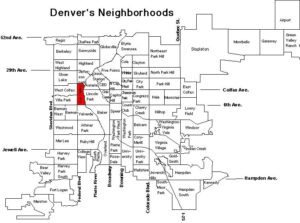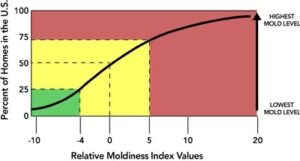Sun Valley Phase I: Determining Whether Living Conditions Made Residents Sick

Built in the 1950’s and located between 6th Avenue and Colfax, Sun Valley is one of Denver’s roughest neighborhoods. It has primarily served as an affordable housing district, as nearly 80% of the residents live in poverty, and are some of the most likely in the city to end up in prison. The neighborhood has also struggled due to limited opportunities for growth, as most of the area is cut off by highways, rail lines, dead-end streets, and the South Platte River.
In 2016, the Denver Housing Authority, owners and operators of the 333 deteriorating public housing units in the area, were awarded a $30 million grant to implement the Sun Valley Neighborhood Transformation Plan. The design proposes to replace the original housing, as well as develop additional homes under a new community model, with equity, environmental justice, and public health as its driving forces.
The renovation provided an opportunity for researchers from the Environmental Protection Agency (EPA) to investigate whether Sun Valley residents experienced any unusual health conditions based on where they live.
Researchers created a study to determine whether the residents’ health from when they lived in the old Sun Valley development changed after they moved into the revitalized community. Using the information they collect over the years, the researchers will provide a report detailing the impact of the transformation plan and any recommendations.
First Phase and Results:
Working in conjunction with the Eastern Research Group and using claims data from the CO APCD, they first measured property and health conditions found in the neighborhood from 2015-2019. Specifically, mold contamination and particulate matter concentrations in Sun Valley homes as well as the circulatory and respiratory health of people living in the area compared to all Denver residents.

Initial results revealed the Sun Valley properties had higher rates of mold compared to other Denver homes.These properties were averaging an Environmental Relative Moldiness Index score of 5.25, which is much higher than the average score of zero. The residents were also significantly more likely to develop acute respiratory infections, chronic lower respiratory diseases, and asthma compared to other Denver residents.
While the initial results are compelling, this analysis is several years away from being complete. Researchers will begin the next phase of the analysis once the new development has been completed and re-occupied by tenants.
